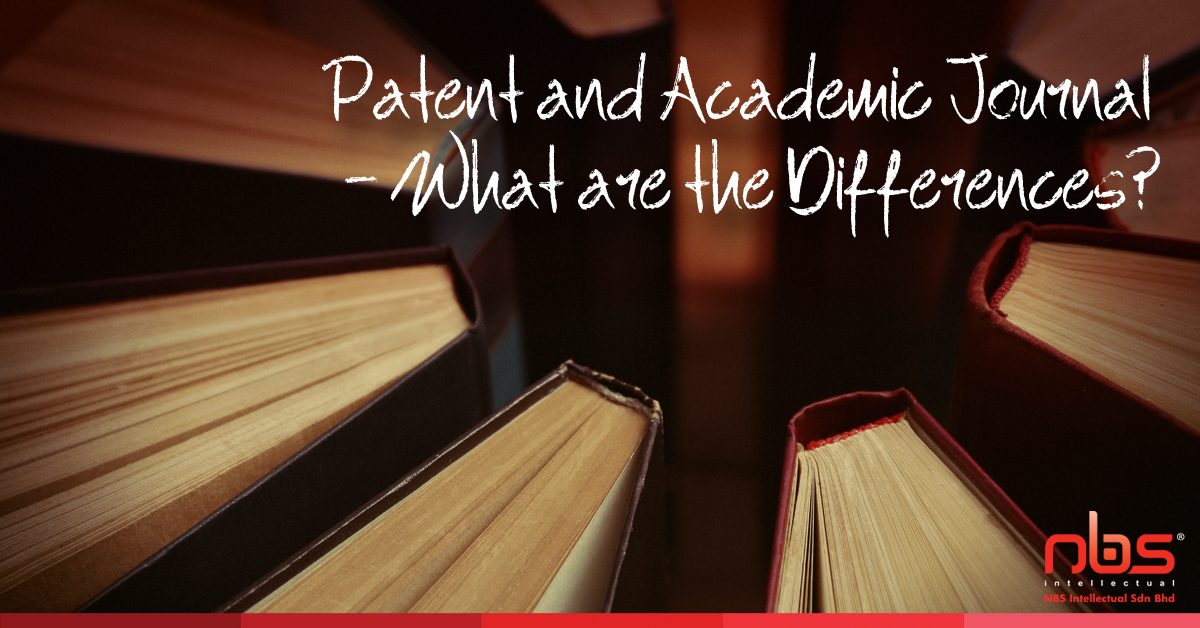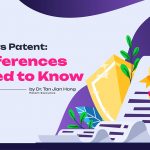The goal of many researchers in the rat race of research arena is to publish their new findings so that others in the research community know that they have come up with such achievements, apart from sharing that piece of knowledge, getting cited for that information, and earning some reputation. When new findings as claimed by the researchers are inventive and can potentially be marketable in commercial applications, then there could be a dilemma whether to publish such breakthrough in an academic journal or to apply for a patent, or to do both. Let’s first look at the differences between the two publications.
In application for a patent, there are specific criteria to be fulfilled. First, a subject-matter should qualify as an invention, i.e. it is a product or a process that is created to provide a new way for doing something or to provide a new technical solution to a problem. Then, the invention must be:
- novel,
- inventive, and
- industrially applicable.
Novelty is the newness of the subject-matter, which should first satisfy the definition of an invention. An invention is considered new if it has not been disclosed anywhere in the world earlier than the stipulated time frame (governed by rules which are country-specific) prior to the application. Sounding as ambiguous as an invention must be inventive, being inventive means that it should not obvious to any person with skills in the same technical background to come up with the same invention. Next, the invention must be susceptible of industrial applicability. Having that said, the subject-matter should not be merely abstractive or intellectual without any technical effect. Therefore, the invention should be capable of being made or used in any kind of industry. Only when an invention does not fall into any category of non-patentable matter and satisfy the novelty, inventiveness and industrial applicability criteria that other aspects of the invention will be assessed for the grant of patent. A patent is legally binding in that it is a form of agreement between the applicant and the government which grants exclusive rights to the applicant to exclude others from using, producing or selling the product or process of the invention without permission from the applicant. Therefore, the grant of a patent is usually done by the national intellectual property office of a country.
Academic journals do not have specific criteria for the assessment of novelty, inventiveness and industrial applicability, nor they emphasize on the technical effect of a discovery. Reviewers of academic journals do not consider whether a subject-matter falls within the definition of invention, but emphasize more on scrutinizing the relevance of the subject-matter to the field of publication, the methodological aspects and the reliability of the results and discussion presented. Besides that, majority of academic journals are ranked according to a score known as impact factor, which then enables classification of the journals into quartile rankings in the field of publication. A journal having a high impact factor and placed in a high quartile ranking is often considered to be highly reputable. It follows that research papers that are submitted for publication in highly reputable journals are subject to tougher scrutiny and hence, more difficult to be published. This also means that research papers that are successfully published in such journals are considered remarkable in one way or another and would be highly regarded in the scientific community. Governments or private institutions in certain countries even provide monetary grants for researchers who publish in such journals. Nevertheless, unlike patent, publication in a journal is not legally binding in that no protection or grant of exclusivity is granted to the person or institution which publishes in a journal. This is because a journal does not constitute any form of agreement and does not legally represent any party, but it is published by an institution or company that owns it. Despite that, due to their peer-reviewed nature, journals are more credible platforms for knowledge sharing (with or without certain publication and access fees) than other freely accessible sources of knowledge in the world wide web. Unlike patent again, publishing in a journal would also mean that people who can access the information can use it to replicate or invent around the published invention, be it in a research setting or a commercial setting.
If you need to know more about the trademark registration process or questions,
Please Contact Us: 03-58914846
Or Email Us: [email protected]
Website: www.nbs.com.my
©MARCUS CHEE OF NBS INTELLECTUAL SDN. BHD.
Ph.D IN BIOSCIENCES
ALL RIGHTS RESERVED







Comments are closed.